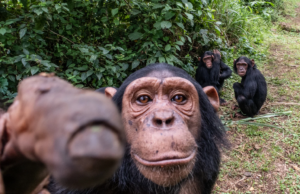GAP IVORY COAST: Forests Cavally and Goin Débé biodiversity threatened by cocoa production

By Serge Soiret
The forests of Cavally and Goin Débé, the last ones still well protected in Ivory Coast are threatened! Why? Because 40 % of the national production of cocoa come from these forests.
Ivory Coast (West Africa country) is the world’s largest producer of brown gold since 1978. According to a governmental report ever published, 40% of the national production come from the classified forests, through a system almost exclusively led by foreign and non-regular activities.



Despite the presence of the government military staff and forest authority, it does not prevent that populations installed clandestinely in these classified forests to bring out the cocoa every day.
Due to these clandestine infiltrations in the protected forests, the local people began to act. They seized the quantities of cocoa which is considered to be illegal. Local NGOs – OPRFT and NOFNA – initiated a campaign, which aims to seize all the illegal cocoa and to alert the authorities in order to stop the invasion and the illegal occupation of those forests.
This initiative also aims to alert large international chocolate sellers, like Cemoi, Barry Callebaut and Cargil, to stop encouraging the clandestine activities and the deforestation process. And also inform the whole world that the cocoa which leaves this area comes from the classified forests and should not be bought on the national and international market.
This deforestation process is impacting on the disappearance of animals’ species, among them the CHIMPANZEES. Goin-Débé and Cavally classified forests represent existing and priority natural corridors between the Taï National Park, in Ivory Coast, and the Sapo National Park, in Liberia.
It is possible to reconstitute this nature especially if the local populations decided embrace this mission of safeguarding.
Read more (in French):
http://www.jeuneafrique.com/…/cote-divoire-cacao-menace-fo…/
http://www.eburnietoday.com/…/populations-de-zagne-saisiss…/

 Español
Español
 Português
Português








